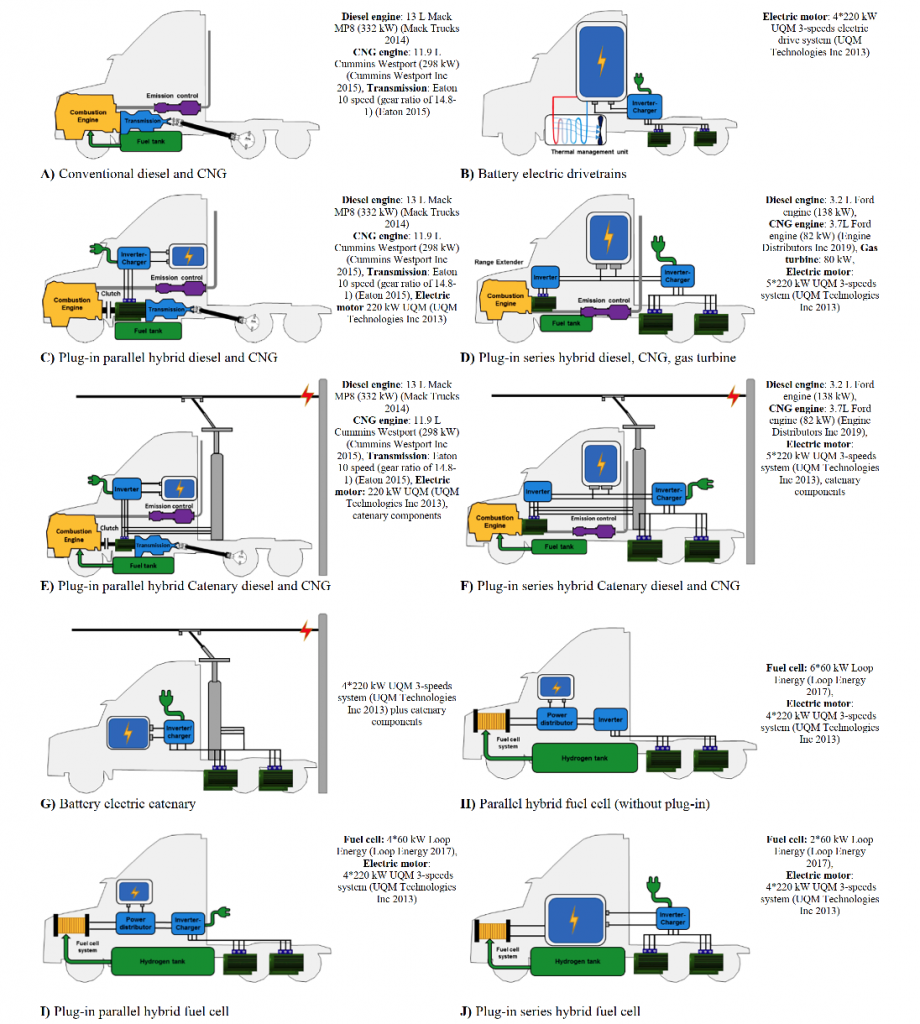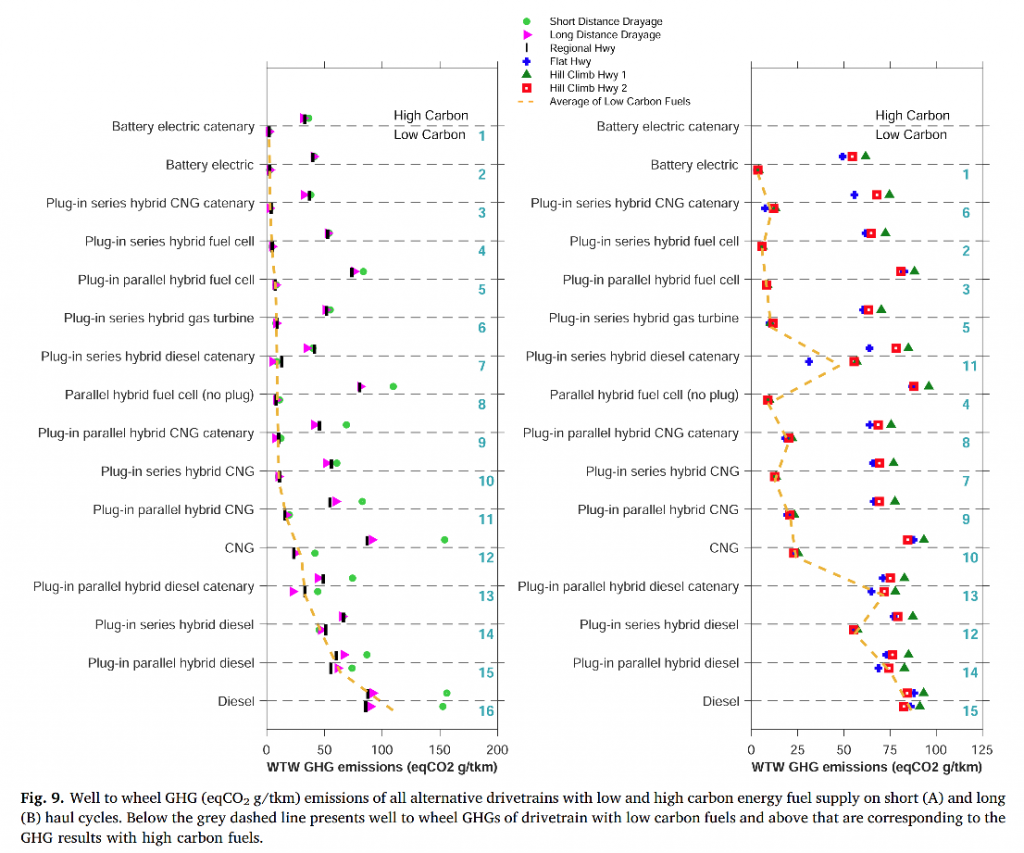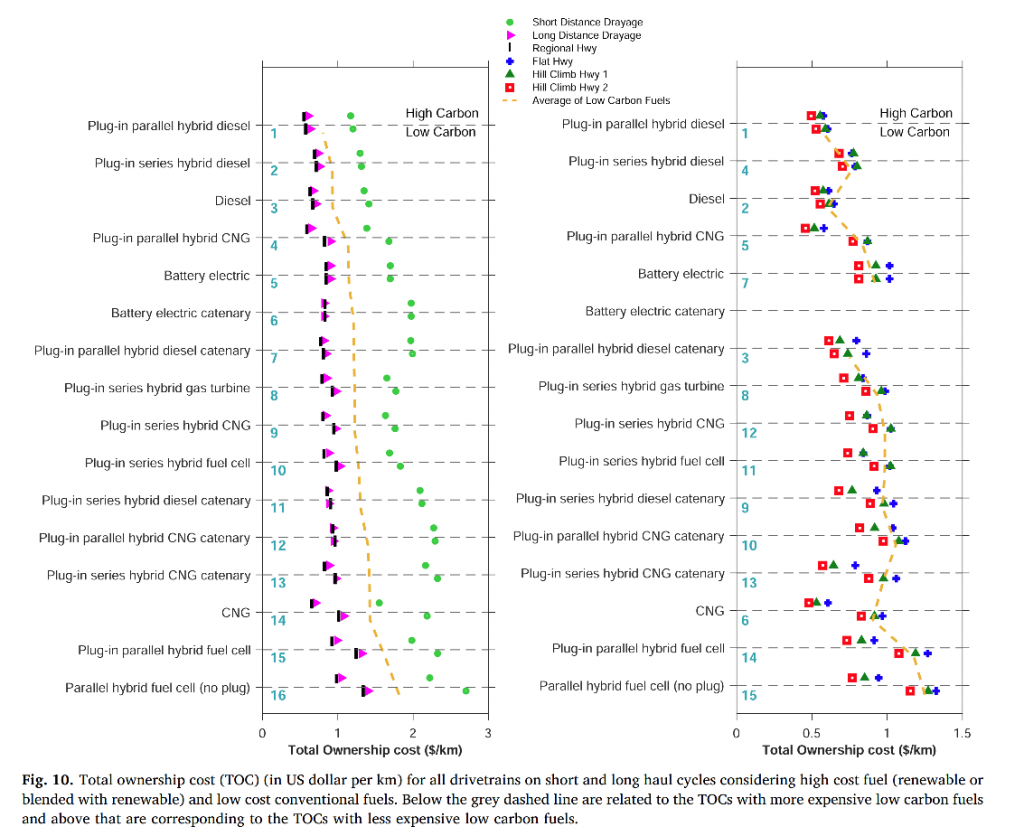One of the most important questions to ask in transitioning to renewable modes of transport is simply: How much less CO2 are we going to emit by switching to renewables?
The other important question is: How much does it cost?
I have been researching on that question quite a bit. And I found quite a few good studies. But this one particular article was so well written that I am excited to share it.
It was a study done in Canada by three researchers (Lajevardi, Axsen and Crawford) in University of Victoria and Simon Fraser, titled “Comparing alternative heavy-duty drivetrains based on GHG emissions, ownership and abatement costs: Simulations of freight routes in British Columbia“. It was published in Transportation Research Part D in 2019.
The first two sentences of the abstract made it clear what this study is about:
“This study quantified the well-to-wheel GHG emissions, total ownership costs and abatement cost for 16 different heavy-duty truck (HDT) drivetrains, including those powered by natural gas, electricity, and hydrogen. Using the case of British Columbia, Canada, we employed GPS activity data for almost 1600 container tractor-trailer trucks to extract six distinct drive cycles.“
They then thoroughly surveyed the literature, and summarized the main findings of the most relevant papers in a tabular form. Beautiful.
To make the article accessible to a wide range of audience, they include a graph explaining how each type of drivetrain technology work, as follows:

Beautiful.
The most beautiful part is how they summarized their results. Instead of presenting several long tables with numbers, here are what they did:

That was just beautiful! Also notice how they clearly explained the graph in the legend.
The graph effortless showed the difference of each drivetrain technology in terms of CO2 emissions. What I learned from the graph are:
- Fuel cell technology is very clean, almost as good as battery electric technology.
- Diesel is the worst offender.
- and natural gas (CNG) is somewhere in the middle, but on the low side. Thus it seems reasonable that CNG is a good bridget fuel, especially used in hybrid mode with other clean fuels such as fuel cells or batteries.
- What is remarkable is that there is a 100X difference between the cleanest (e.g. battery) and the worst (diesel) in terms of GHG emission!
But when we look at the cost side, it is a different picture:

Cost-wise, diesel is the cheapest while fuel cell is the most costly. But battery electric is showing a lot of promise, as the difference between its cost and diesel is relatively close (less than 3x). Even fuel cell technology is less than 3X compared to diesel.
This is the best written research I have seen in a while, both in terms of content and delivery. The authors deserve big kudos.

Leave a Reply
You must be logged in to post a comment.